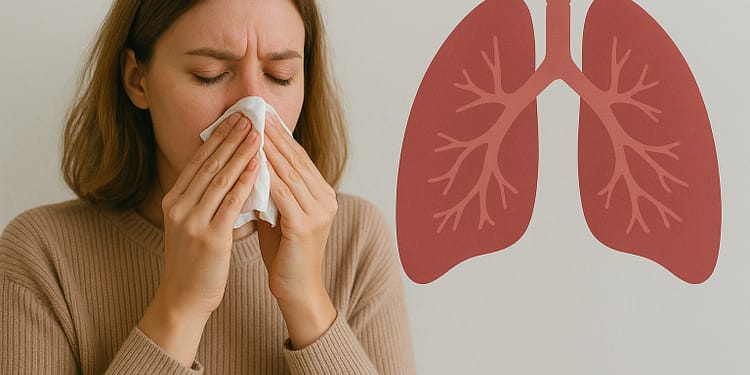- Cough, Mucus, and Respiratory Health: A Complete Guide - August 18, 2025
- Flogoprofen: what it's used for and how to take it - June 21, 2025
- What is Movicol oral solution in sachet used for and how to take it? - June 18, 2025
Cough and mucus are common symptoms of various respiratory illnesses. Although they are usually temporary, they can also reflect underlying problems that require medical attention. In the field of pulmonology, understanding their origin and implications is essential for maintaining health.
Why does a cough occur and what is its function?
Coughing is a natural reflex of the body. Its purpose is to clear the airways of external agents such as dust, smoke, viruses, or bacteria. It can also be a sign of irritation caused by common viral infections like the flu, or by more complex conditions such as chronic bronchitis or asthma.
In many cases, a dry cough turns into a productive cough when the body produces mucus to trap harmful particles. This transition is often alarming, but it actually reflects a natural defense mechanism.
Mucus: ally and enemy
The mucus It protects the airways, but when produced in excess, it can make breathing difficult. This phenomenon is observed in colds, allergies, and chronic lung diseases.
The color and consistency of mucus provide important clues. Clear mucus usually indicates mild conditions, while a greenish or yellowish hue can be associated with bacterial infections. However, only a pulmonologist can make an accurate diagnosis.
In conditions like COPD, persistent, thick mucus worsens respiratory symptoms. In these cases, doctors recommend individualized treatments that may include bronchodilators or mucolytics under supervision.
Respiratory treatments and care
There are simple measures that help improve respiratory health. Maintaining good hydration helps mucus flow more fluidly and is easier to expel. It's also key to avoid smoky or polluted environments.
If a cough and excessive mucus persist for more than three weeks, it's advisable to see a pulmonologist. The doctor can rule out conditions such as asthma, lung infections, or even tuberculosis.
Regarding medications, mucolytics such as acetylcysteine or ambroxol are indicated to thin bronchial secretions. According to their official data sheets, both drugs should be used under prescription and with doses adjusted to each patient. They should never be taken indiscriminately, as they can cause adverse effects in people with certain conditions.
Furthermore, cough suppressants are reserved solely for cases of persistent, troublesome dry cough, but they should not be combined with mucolytics because they impair mucus clearance. This recommendation is clearly stated in clinical guidelines and the product data sheets of approved medications.
The key role of prevention
Beyond treatment, prevention is central to respiratory health. Getting vaccinated against the flu and pneumonia reduces the risk of complications in vulnerable individuals. Moderate exercise and a balanced diet also strengthen the lungs.
On the other hand, quitting smoking is the most effective way to improve lung function and reduce chronic cough. Numerous studies in pulmonology have shown that smoking cessation slows the progression of serious diseases such as COPD.
To sum up
Coughs and mucus are much more than just passing discomfort. They act as warning signs and, in many cases, as the body's defense mechanisms. Listening to your body, consulting a pulmonologist, and adopting healthy habits are essential steps to protecting your long-term respiratory health.






